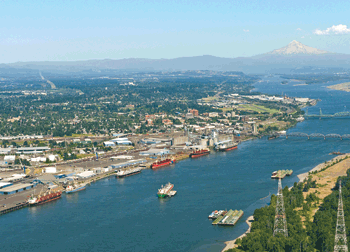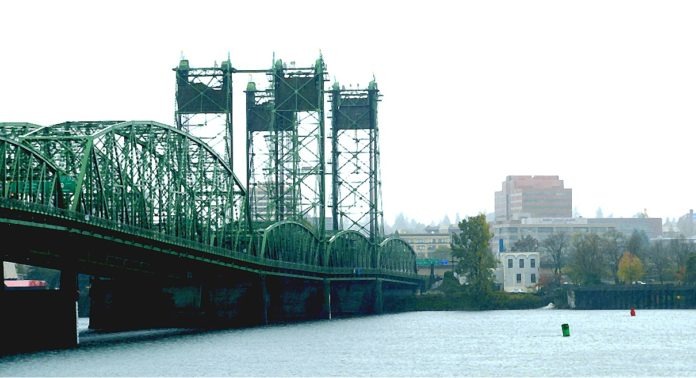Here’s a riddle: I’m urban and rural, suburban and small town. I’m manufacturing and high tech; I’m ports and railways and boutiques. What am I?
The answer to this riddle, as you may have guessed, is Southwest Washington.
How does such a diverse area create its own identity that it can use to market itself? That is the question a number of local organizations are wrestling with, and while not everyone has exactly the same answer, there is a trend to consider Southwest Washington as a part of the greater Portland metro area, and to raise awareness across the nation and the globe of what the entire region – on both sides of the river – has to offer to attract and retain businesses.
The bigger picture
“When a company makes a decision to locate in our region, they are looking at the whole metro area. Then, they will drill down to local communities,” said Lisa Nisenfeld, president of the Columbia River Economic Development Council (CREDC). “Collectively, we have an identity of being a low-cost/high-value place to locate a business.”
 The bottom line, said Colin Sears, vice president of business development for Greater Portland Inc., is that Southwest Washington and all of the greater Portland metro area needs to work together to create a message and communicate outside the region: we’re here, we have workforce, we have affordable cost of doing business, and we’re well connected to Asia, Europe, and the rest of North America.
The bottom line, said Colin Sears, vice president of business development for Greater Portland Inc., is that Southwest Washington and all of the greater Portland metro area needs to work together to create a message and communicate outside the region: we’re here, we have workforce, we have affordable cost of doing business, and we’re well connected to Asia, Europe, and the rest of North America.
“Give the big picture to get them into the door,” said Sears. “Then differentiation between communities becomes more important.”
According to Nisenfeld, the CREDC plans to join forces with Greater Portland Inc. as of January 1.
“Working with them makes us part of that greater Portland identity when we reach out to businesses across the country and globe,” said Nisenfeld.
Paul Dennis, president and CEO of the Camas-Washougal Economic Development Association (CWEDA), pointed out that other large regions have successfully created a unique identity, such as the Tri-Cities, Silicon Valley and Research Triangle Park.
“We would be stronger marketing ourselves as a larger region, rather than Southwest Washington versus the Portland part of the metro area,” said Dennis.
However, to create such a regional identity, Dennis added, will require effort from multiple jurisdictions and entities.
“It will take everyone working together toward a common goal,” he said. “We should look at the region as a whole, play off our strengths and utilize our regional partners as a broader selling point.”
Nisenfeld said that Cowlitz County’s identity plan also “calls for them to identify more with the Portland Metro area.”
“It’s nice to see both sides of the river talking together,” said Dennis. “People need to understand that if one community or jurisdiction is doing well, that can benefit everyone.”
Paul Montague, president of Identity Clark County, gave a good example. When Boeing was looking for new headquarters, said Montague, Chicago community leaders came together to help Boeing find the right location. In Dallas/Ft. Worth, he said, communities competed against each other, and all ended up losing the opportunity.
Strengths and weaknesses
Regional selling points, said Nisenfeld, include two separate tax structures to choose from, low-cost power, strong work ethic, great schools, proximity to an international airport and the intersection of major highways and railroads.
Nisenfeld said PeaceHealth and Farwest Steel are great examples of companies looking for the business climate of Washington, but also drawing from Oregon.
“All the things came together,” she said. “They wanted Washington’s business climate and the region’s large employee base.”
Nisenfeld said that one weakness for Southwest Washington in particular was media coverage.
“Part of our identity is shaped by the TV media,” said Nisenfeld. “They tend to focus on murders, house fires and very little else – maybe some hostage standoffs for variety. This puts forth a false image of Clark County.”
Living in the “media shadow” of Portland creates a challenge – one Nisenfeld and Sears are trying to surmount by educating the rest of the metro area about who we are.
Maggie Davis, VP of marketing at Greater Portland Inc., said when they create brochures about the greater Portland metro area and key sectors such as advanced manufacturing and software/hi-tech, they first create the value proposition for why to look at the region as a whole. At the end, she said, the brochures cover some differences between Oregon and Washington to help people make decisions.
“Having the opportunity to market both sides of the river is a huge advantage for us,” said Davis.
Whatever the approach to creating identity – whether focused on regional, Southwest Washington, or individual communities – Nisenfeld said that identity “is about how we talk about ourselves every day, not what we print up and pass out and talk about at meetings,” and that “marketing is done through relationships.”
“We need to get better at articulating why Clark County is such a great place to live and do business,” said Nisenfeld. “We should value our separateness and value our togetherness – try to balance these without giving up who we are.”




